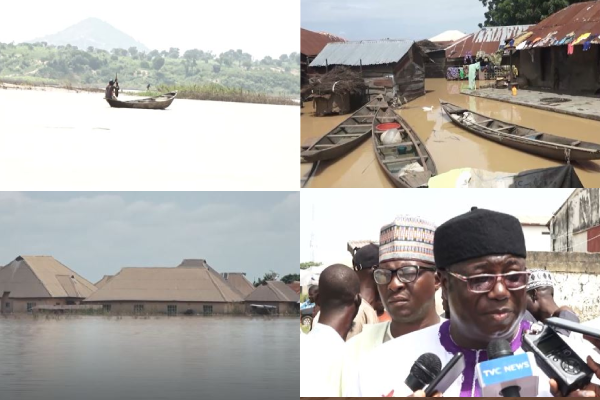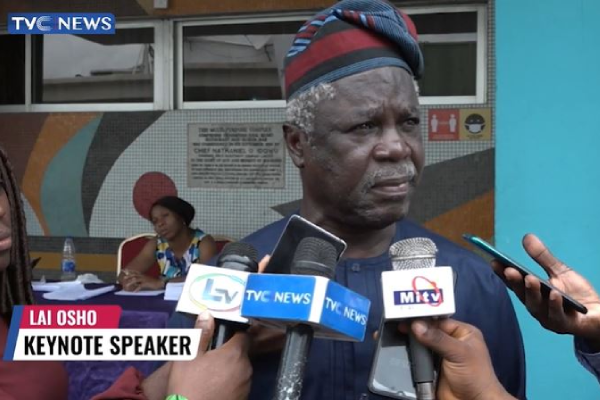Over 50,000 persons have been displaced by floods across 23 of the 25 local government councils of Niger state.
50 lives were lost and over 8,000 farmlands and houses were submerged.
TVC News Correspondent Chenemi Bamaiyi examines the potential impact on food production in the coming year.
Nigeria experiences flooding annually, especially in its coastal areas
But this year’s floods hsve been dubbed the worst in more than a decade.
[wonderplugin_video iframe=”https://youtu.be/SVxOwaxxk2U” lightbox=0 lightboxsize=1 lightboxwidth=960 lightboxheight=540 autoopen=0 autoopendelay=0 autoclose=0 lightboxtitle=”” lightboxgroup=”” lightboxshownavigation=0 showimage=”” lightboxoptions=”” videowidth=600 videoheight=400 keepaspectratio=1 autoplay=0 loop=0 videocss=”position:relative;display:block;background-color:#000;overflow:hidden;max-width:100%;margin:0 auto;” playbutton=”https://www.tvcnews.tv/wp-content/plugins/wonderplugin-video-embed/engine/playvideo-64-64-0.png”]
Authorities blame the disaster on the release of excess water from Lagdo Dam in neighbouring Cameroon and on unusual rainfalls.
Mr Bamaiyi has been covering the devastating effects of the flood that has done damage across 33 of Nigeria’s states particular in Niger, the biggest state in Nigeria which occupies a total landmass of 76,000 square kilometres.
Visiting the areas affected entails hours of sail on water in areas that used to be dry, dusty roads and farmlands but who are now completely submerged.
As the flood ravaged communities, local authorities have raced to provide relief to hundreds of thousands of people affected.
Efforts to evacuate them from their submerged homes have however been relatively slow.
A visit to these communities reveals a huge humanitarian crisis in need of urgent attention especially food, clean water and temporary accommodation as everything the people had has literally been destroyed by the flood.
In Gbarra village a riverine community in Lavun Local Government council, a boat capsized with 47 persons on board, 6 persons died and after days of search and rescue operations 4 more bodies were recovered 10.
A father also lost two of his sons to the mishap.
The death toll in Nigeria has risen to over 600 .
The Niger state Emergency Management Agency reports that from Niger state, 50 persons have died, 86 communities have been completely displaced and over 50,000 persons affected.
Mokwa local government council is the worst hit after the gates of the Kainji and Jebba dams were opened for water to flow downstream leading to the destruction of 886 farmlands and houses.
The flooding has worsened food production crisis in Nigeria especially in the northern part of the country where banditry has displaced people from their farming communities.
The inhabitants of the flood affected areas are majorly farmers and this poses a greater threat to food security.
There are concerns that there might be food shortage in the coming year except the people engage in aggressive dry season farming.
Solving the problem of flood requires construction of dams and dredging of the Niger river for it to find a free course for prevention and mitigation of flood.





